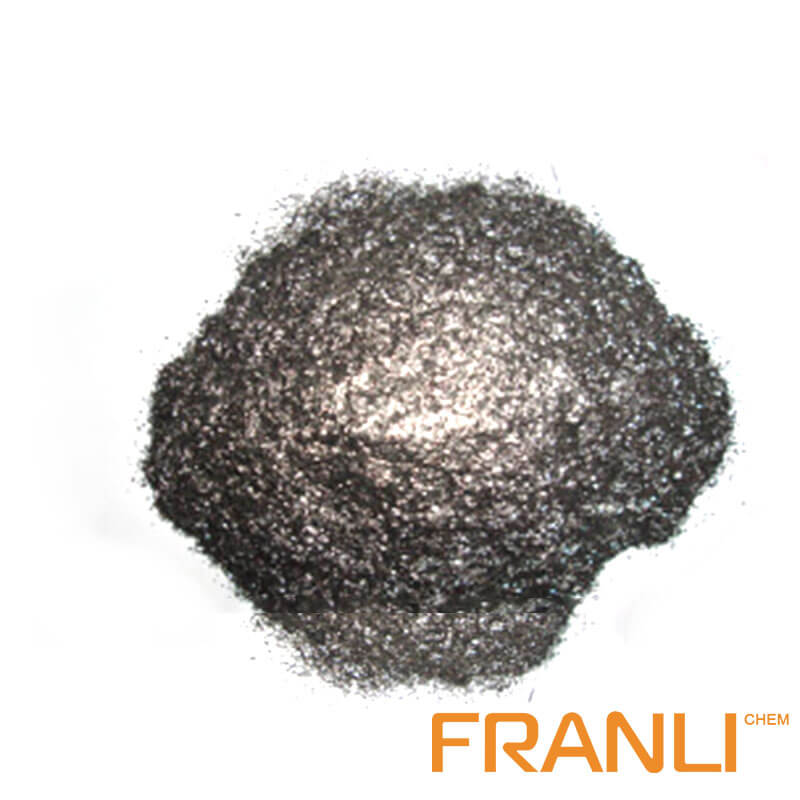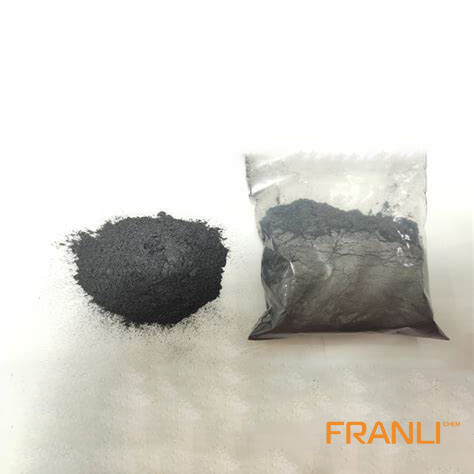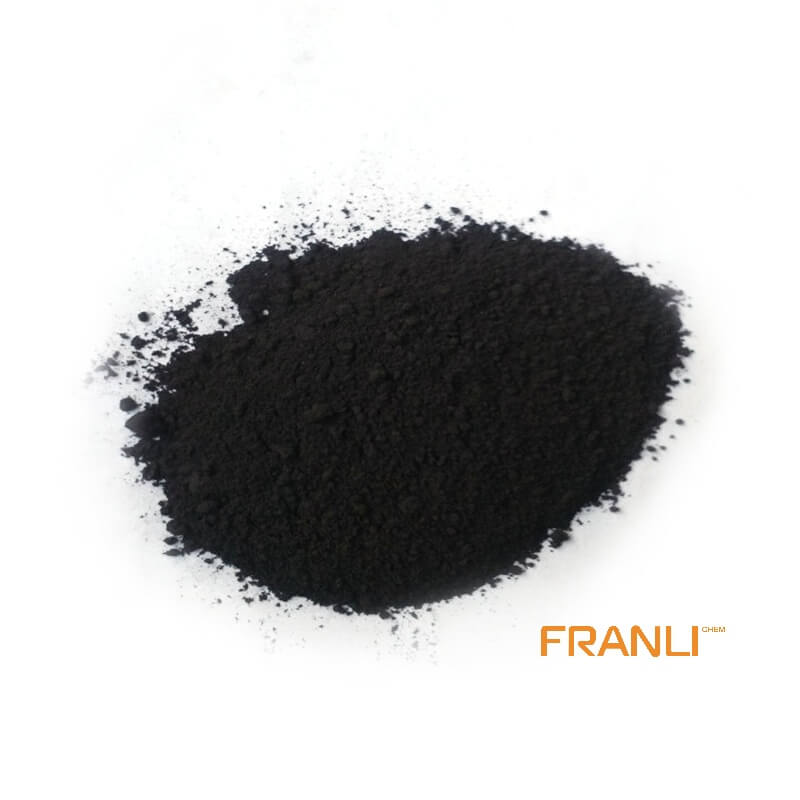


Flake Graphite
Size
0.01mm
Carbon Content
99%min
Package
25kg small bags into ton bags
Origin
China
Features
thermal shock resistance, lubricity, conductivity and plasticity…
Application
Lead battery plates positive and negative conductive agent, lithium batteries nickel hydrogen etc
Natural flake graphite has superior physical and chemical properties and is widely used in metallurgy, coatings and refractory industries. It is an important non-metallic raw material that is indispensable for today’s high-tech. Flake graphite is divided into large flake graphite and fine flake graphite according to the size of its scales. Usually, large flakes refer to +32 mesh, +50 mesh, +80 mesh, and +100 mesh flake graphite.
Request a quote
1 Planning and development of new materials based on natural flake graphite
Crystalline graphite (natural flake graphite) is a naturally formed graphitic polycrystal with a high degree of graphitization. It is characterized by lightweight, low hardness, good processability, low resistivity, high thermal conductivity, and certain permeability. When planning products, we should make full use of these excellent physical and chemical properties, that is, the characteristics of the graphite phase should play a leading role in the physical properties of planned products. Among the many physical properties of graphite, conductivity and heat conduction are two extremely important properties. Accordingly, when planning downstream products, we should also focus on these two characteristics. Spherical fossil ink anode material is the product actively planned by many graphite industrial parks. However, the negative graphite material of lithium batteries is very sensitive to the content of metal ions. If the content of iron, manganese, and other metal ions in natural graphite is too high, it is bound to put forward higher requirements for the purification process and increase the production cost. However, thermally conductive products have low requirements for impurity content but have certain requirements for the particle size of natural flake graphite (generally, the particle size should be greater than 20) μ m)。 It can be seen that the requirements for raw materials of lithium-ion battery cathode products and thermal conductivity products are complementary to each other. In the utilization of natural flake graphite ore, this complementarity can be fully considered and suitable downstream products can be developed.

The traditional utilization of amorphous graphite (aphanitic graphite) is the production of pencil, carbon rod, refractory, and casting. These downstream products mainly use earthy graphite with low price and high carbon content and do not really use the unique morphology and physical properties of earthy graphite. The biggest difference between aphanitic graphite and natural flake graphite is that the particle size is small and approximately spherical. As a raw material of isotropic graphite, it has congenital advantages. Shanxi Institute of coal chemistry, the Chinese Academy of Sciences, Tsinghua University, and other scientific research institutions used aphanitic graphite in the molding process of isotropic graphite. It was found that the introduction of Aphanitic Graphite had a positive effect on the porosity and isotropy of graphite products. This discovery provides a new possibility for the utilization of amorphous graphite.
To sum up, the high-value development of natural graphite minerals includes two parts, namely, the development of natural flake graphite and the development of aphanitic graphite. When planning downstream products based on natural graphite, we should always focus on the unique physical properties of graphite, and reasonably plan downstream products according to technical indicators such as impurity type/content and particle size. In addition to popular products such as spherical fossil ink and graphene, develop various types of new materials, enrich the types of downstream products and enhance the development value of natural graphite. Figure 1 arranges the road map of natural graphite utilization and introduces in detail the development ideas and application scenarios of several representative products.
1.1 High thermal conductivity graphite block
With the rapid development of the electronic industry, thermal management has become a common problem of electronic products. The existing metal materials have encountered the bottleneck of performance improvement, and graphite material is the next generation of heat dissipation material with great potential. The research and development of high-performance graphite heat conduction material have a clear market prospect. The heat dissipation methods of electronic equipment can be summarized as fin cooling, air convection forced cooling, liquid cooling, and so on. Without exception, these cooling methods transfer heat from power devices to the environment through media. This heat transfer requires a certain contact area. With the continuous miniaturization and integration of electronic equipment, this contradiction is becoming more and more prominent. Therefore, the thermal expansion of electronic equipment, i.e. transverse uniform temperature, has become the starting point of thermal control design. The ideal heat diffusion material should have a high thermal conductivity in the plane direction, and the characteristics of graphite material are just consistent with it. Therefore, high thermal conductivity graphite block is an ideal heat expanding material in the process of thermal management of electronic equipment. Most of the existing heat expansion materials are mainly metals (aluminum and copper). Considering the cost, weight, strength, and other factors, aluminum alloy is mainly used in practice. The thermal conductivity of aluminum alloy is between 120 ~ 200 W / (m · K), while the thermal conductivity in the plane direction of high thermal conductivity graphite block can reach more than 600 W / (m · K), and the heat expansion capacity is 3 ~ 5 times that of existing aluminum alloy. It has important popularization value in the heat expansion process of power electronic devices such as light-emitting diode (LED), central processing unit (CPU), graphics processor (GPU).

Liu Zhanjun et al. used crystalline flake graphite as raw material to prepare high-quality heat conductive graphite blocks by hot pressing. natural flake graphite has a perfect crystal structure. During hot pressing, Si, Ti, and other components with catalytic graphitization are introduced. By controlling hot pressing temperature and pressure, they can play a synergistic role to obtain graphite blocks with perfect graphite microcrystals and oriented arrangement (Fig. 2). In this way, high thermal conductivity graphite blocks with thermal conductivity of more than 700 w / (m · K) can be prepared.
1.2 High thermal conductivity graphite film
As mentioned earlier, the heat expansion of local heat sources is a common problem in the heat dissipation design of much electronic equipment. In electronic equipment with large size and space, a heat expansion plate can be used to realize plane temperature equalization. However, for consumer electronic devices with compact space and limited size, this can be achieved by high thermal conductivity graphite film. Taking smartphones as an example, many well-known mobile phone brands achieve flat temperature equalization and eliminate local hot spots by pasting graphite film on the inner wall of the back cover shell.
At present, the common high thermal conductivity graphite films can be divided into two categories according to their preparation methods, namely, synthetic graphite films with polymer films as precursors and high thermal conductivity graphite films with natural flake graphite as raw materials. The representative product of the former is the graphitized film obtained by high-temperature heat treatment at 3000 ℃ with biaxially stretched polyimide film as a precursor. It is reported that the thermal conductivity of this graphite film can reach more than 1200 W / (m · K). However, it must be pointed out that due to the limitation of technical level, the thickness of synthetic graphite film is mostly 60 μ M and below. The formula of heat conduction q = Ka Δ T shows that the heat transferred by heat conduction is related not only to the thermal conductivity of the material itself but also to the cross-sectional area of heat conduction. Therefore, the thermal conductivity of artificial graphite film also has some limitations.
High thermal conductivity graphite films based on natural flake graphite have more potential in comprehensive properties (Fig. 3). Wei Xinghai et al. prepared worm graphite with an expansion ratio of 200 ~ 300 times with 30 mesh flake graphite as raw material and perchloric acid as intercalation agent. The worm graphite is rolled into a thickness of 50 ~ 200 μ M, its thermal conductivity can reach 600 W / (m · K). It is not difficult to see that considering the factors of thermal conductivity and thickness, the graphite film starting from flake graphite has a strong competitive advantage. If the purity of natural flake graphite and the bulk density of graphite film is further improved, it is possible to obtain natural graphite film with higher thermal conductivity, and its competitive advantage will be more obvious.
1.3 Porous graphite and Its Composites
Worm graphite with self-aggregation and porous graphite with controllable bulk density (0.1 ~ 1.0 g / cm3) can be prepared from natural flake graphite. This porous graphite has the advantages of lightweight and high thermal conductivity and can be applied to adsorption, enhanced heat transfer, and other fields.

In addition, the pores of porous graphite are mostly capillary pores (10 ~ 50 μ m), the combination of porous graphite and phase change material can solve the two problems of heat conduction strengthening and high-temperature setting of phase change material. The team of Shanxi Coal Chemical Institute compounded porous graphite with phase change materials such as paraffin, alkane, and low melting point alloy [17-24], and summarized the relationship between the bulk density of porous graphite and the thermal conductivity of phase change composites (Fig. 4). By adjusting the pore structure and bulk density of porous graphite, the thermal conductivity of phase change materials is increased by more than 100 times, and phase change composites with thermal conductivity of 10 ~ 100W / (m · K) are developed [25]. This technology greatly improves the response speed of the phase change material to the heat source, can quickly transfer the heat from the heat source to the phase change material, and absorb the heat through the solid/liquid phase change process of the phase change material [26-27].
Based on this rapid response phase change composite material, a series of thermal management devices based on phase change technology can be prepared. These application fields include thermal control of electronic equipment, heat storage device for solar light heat conversion, heat storage unit for waste heat utilization, daily necessities for rapid temperature reduction/insulation, etc.
2 . Conclusion
Natural graphite is not only an important strategic resource but also a nonrenewable mineral resource. The key to realizing the high-value development and utilization of natural graphite is to make good use of its unique physical properties such as conductivity, heat conduction, and lightweight. In addition, suitable downstream products shall be planned according to the characteristics of graphite, impurity content, and particle size. For low impurity content, the particle size is 10 ~ 20 μ M, it is suggested to develop spherical graphite for the negative electrode of lithium battery. For natural flake graphite with high impurity content, priority should be given to the development of heat management-related materials, including high thermal conductivity graphite block, high thermal conductivity film, thermal conductivity polymer materials, etc. It is particularly worth mentioning that in recent years, a number of new materials and products related to graphite have appeared in the field of building energy-saving heating, including graphite polystyrene board, heat-conducting gypsum, graphite radiation refrigeration board, etc. Secondary battery electrode materials, thermal management materials, and building energy conservation have the large market capacity and broad development prospects.



